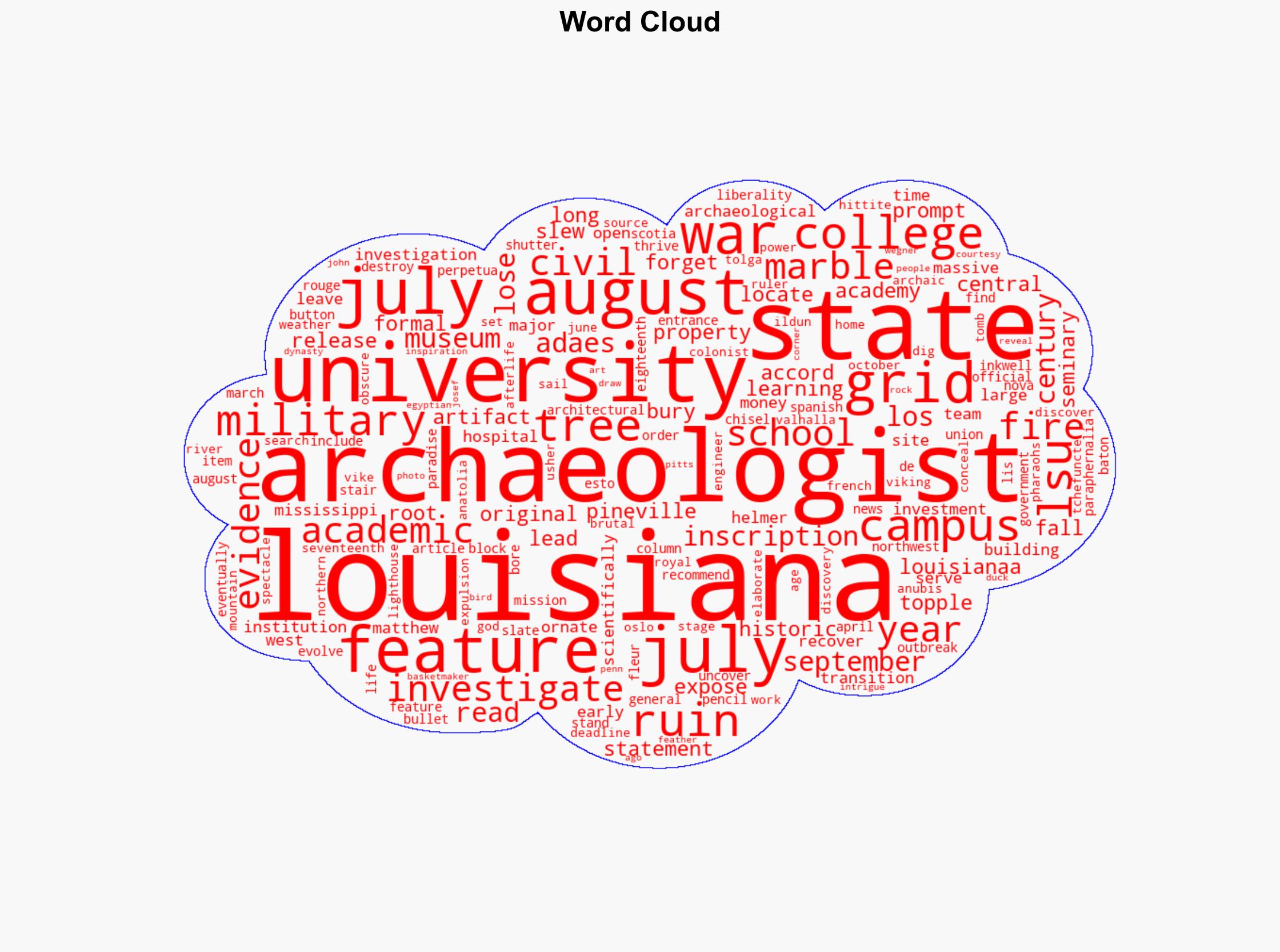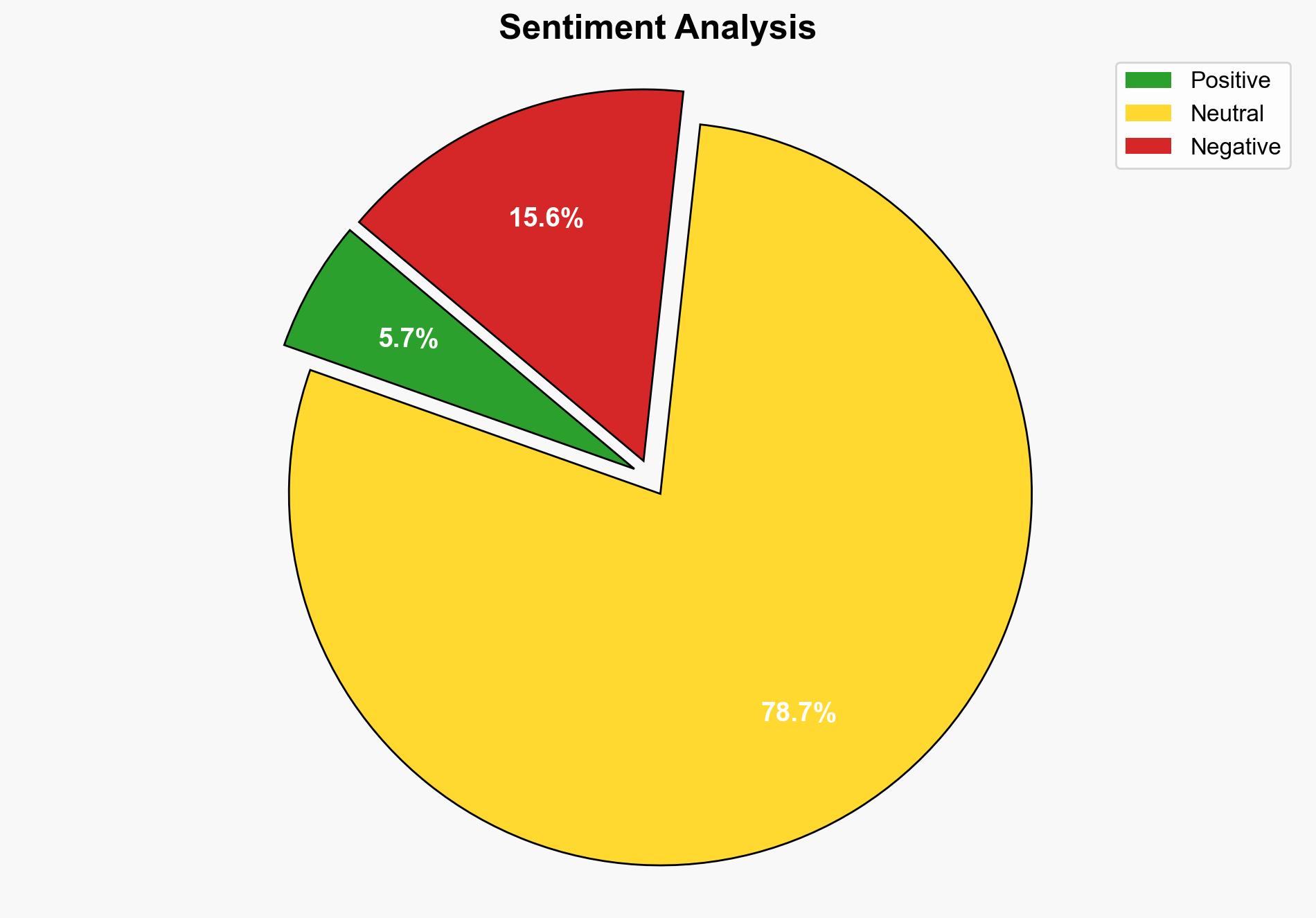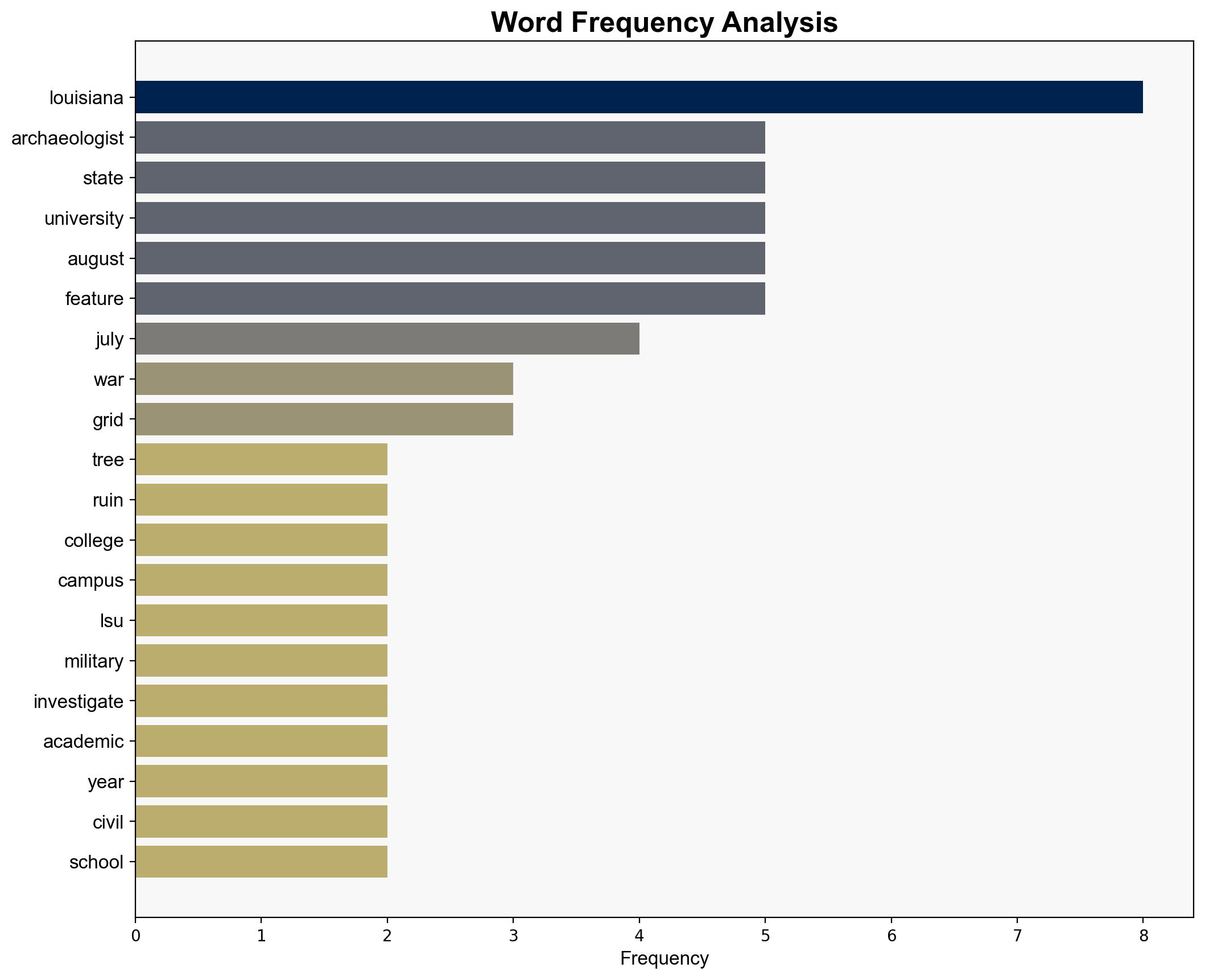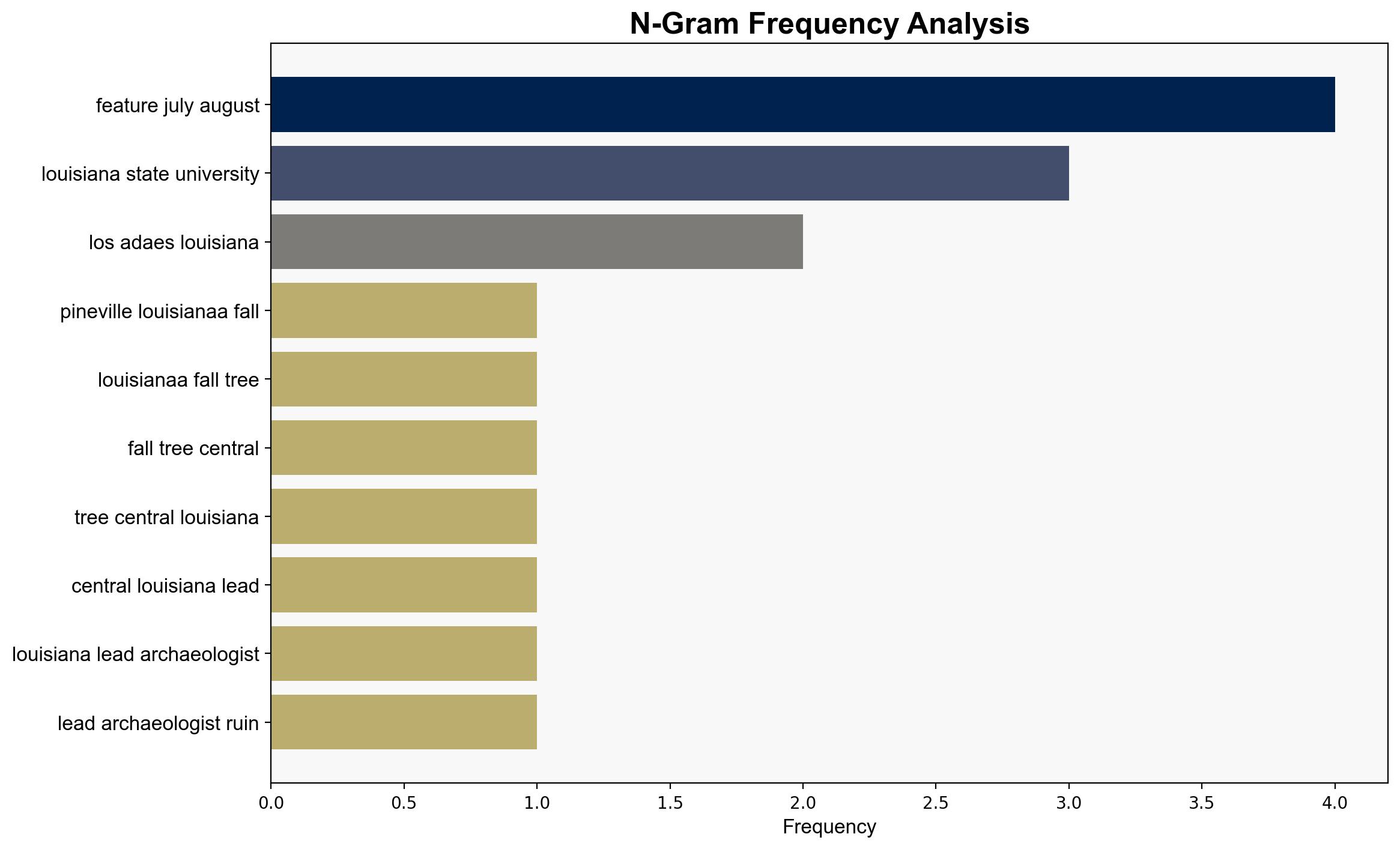First Campus of Louisiana State University Investigated – Archaeology
Published on: 2025-08-13
Intelligence Report: First Campus of Louisiana State University Investigated – Archaeology
1. BLUF (Bottom Line Up Front)
The investigation of the original Louisiana State Seminary site has unearthed significant historical artifacts, suggesting a rich academic and military history. The most supported hypothesis is that the site offers critical insights into pre-Civil War educational and military practices, which could enhance historical understanding and cultural heritage preservation. Confidence level: Moderate. Recommended action: Prioritize further archaeological study and preservation efforts.
2. Competing Hypotheses
1. **Hypothesis A**: The site primarily served as an educational institution with significant military associations, as evidenced by the artifacts found, such as military paraphernalia and academic items.
2. **Hypothesis B**: The site was predominantly a military facility with secondary educational functions, indicated by the presence of military artifacts and the historical context of its operation during the Civil War.
Using ACH 2.0, Hypothesis A is better supported due to the diversity of artifacts related to both academic and military life, suggesting a dual-purpose institution.
3. Key Assumptions and Red Flags
– **Assumptions**: It is assumed that the artifacts found are representative of the site’s primary function. The interpretation of the site’s role is heavily reliant on the artifacts’ context and historical records.
– **Red Flags**: Potential bias in interpreting artifacts without comprehensive historical documentation. The possibility of undiscovered artifacts that could alter current interpretations.
4. Implications and Strategic Risks
The findings could reshape historical narratives about educational and military practices in pre-Civil War America. Risks include potential damage to artifacts if not properly preserved and the challenge of integrating new historical insights into existing frameworks. There is also a risk of public misinterpretation or sensationalism affecting historical accuracy.
5. Recommendations and Outlook
- Conduct a comprehensive archaeological survey to ensure all artifacts are documented and preserved.
- Engage historians and archaeologists to contextualize findings within broader historical narratives.
- Scenario-based projections:
- Best: Enhanced understanding and preservation of historical heritage, leading to educational and cultural benefits.
- Worst: Misinterpretation or damage to artifacts, resulting in historical inaccuracies.
- Most Likely: Incremental contributions to historical knowledge with moderate public interest.
6. Key Individuals and Entities
Matthew Helmer (LSU archaeologist) is central to the investigation and interpretation of the site findings.
7. Thematic Tags
cultural heritage preservation, historical archaeology, educational history, military history





